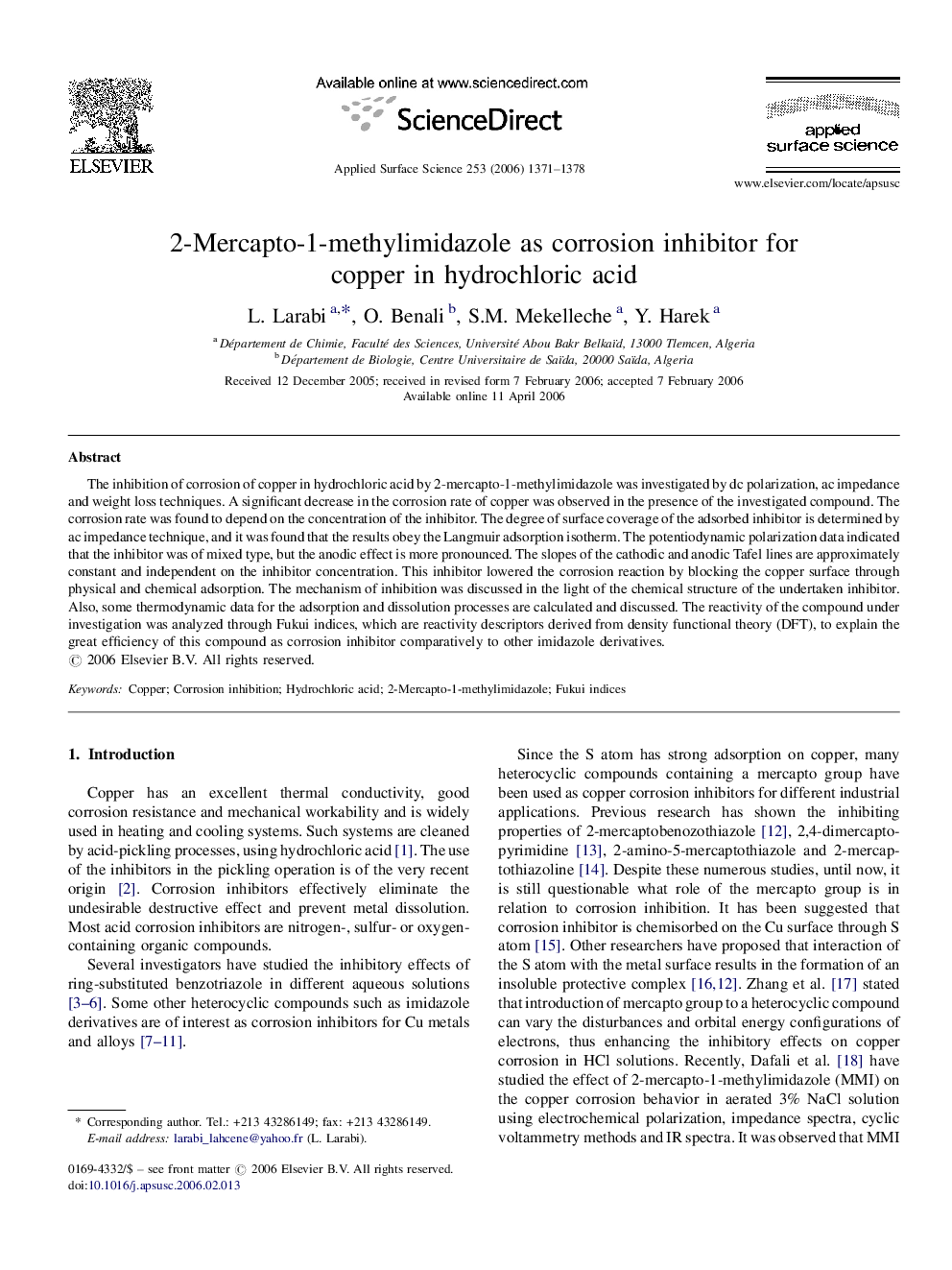| Article ID | Journal | Published Year | Pages | File Type |
|---|---|---|---|---|
| 5370157 | Applied Surface Science | 2006 | 8 Pages |
The inhibition of corrosion of copper in hydrochloric acid by 2-mercapto-1-methylimidazole was investigated by dc polarization, ac impedance and weight loss techniques. A significant decrease in the corrosion rate of copper was observed in the presence of the investigated compound. The corrosion rate was found to depend on the concentration of the inhibitor. The degree of surface coverage of the adsorbed inhibitor is determined by ac impedance technique, and it was found that the results obey the Langmuir adsorption isotherm. The potentiodynamic polarization data indicated that the inhibitor was of mixed type, but the anodic effect is more pronounced. The slopes of the cathodic and anodic Tafel lines are approximately constant and independent on the inhibitor concentration. This inhibitor lowered the corrosion reaction by blocking the copper surface through physical and chemical adsorption. The mechanism of inhibition was discussed in the light of the chemical structure of the undertaken inhibitor. Also, some thermodynamic data for the adsorption and dissolution processes are calculated and discussed. The reactivity of the compound under investigation was analyzed through Fukui indices, which are reactivity descriptors derived from density functional theory (DFT), to explain the great efficiency of this compound as corrosion inhibitor comparatively to other imidazole derivatives.
